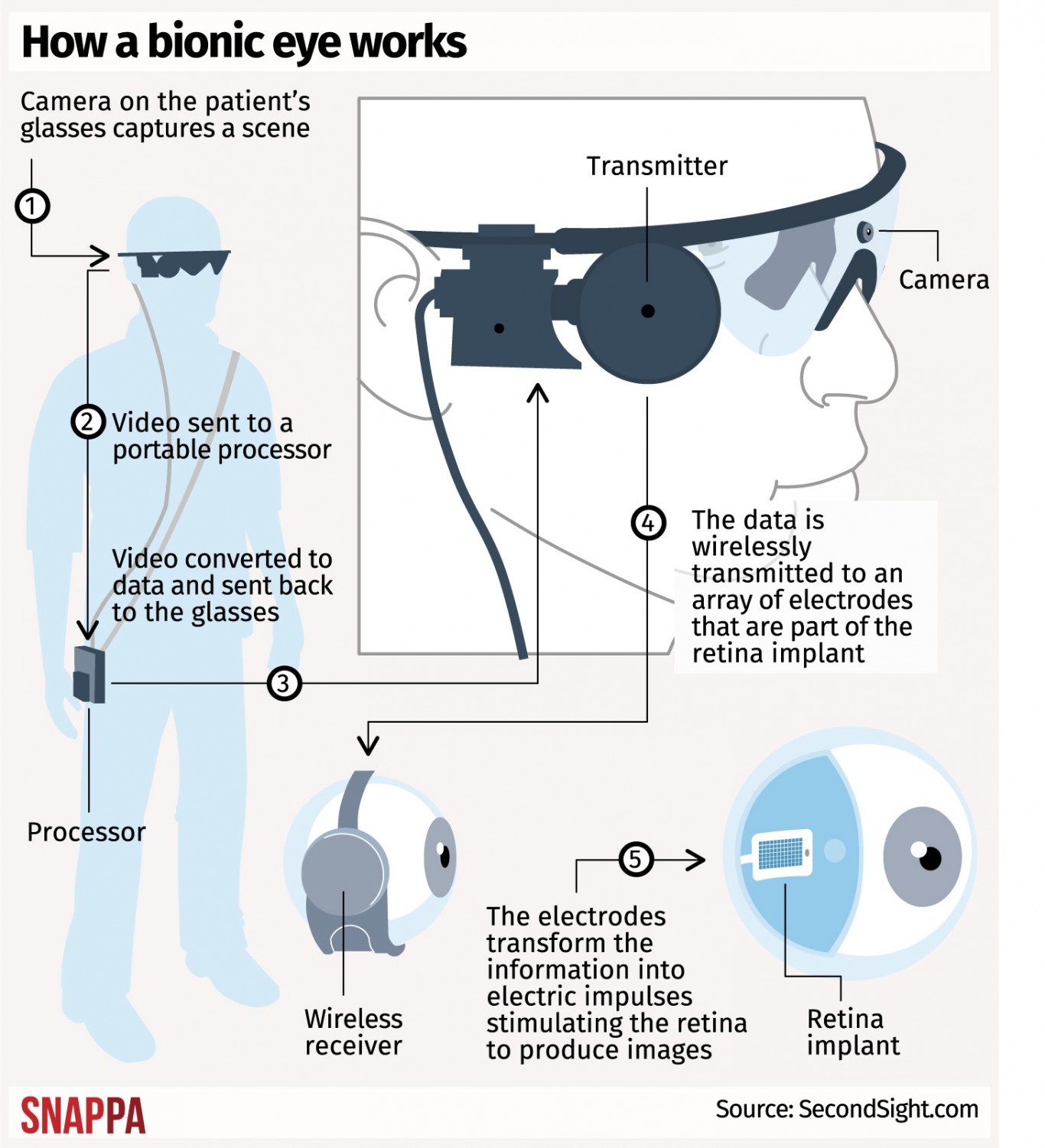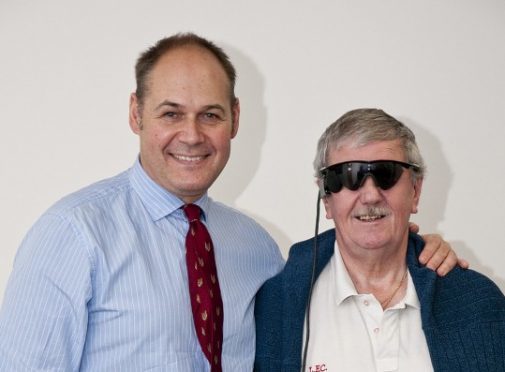The NHS is going to pay for 10 people with an inherited form of blindness to be fitted with “bionic eye” implants.
It sounds pretty high tech, so here’s everything you need to know about them:
Patients will have an implant fitted in their retina.

They will also be given a pair of special glasses with a camera mounted to them.
That camera will capture light which will in turn send wireless signals to the retina implant.
The electrodes in the implant transform that data into electric pulses which will then relay the info to the brain and help the patients regain some of their sight.
One of the first people to have the implant fitted was 68-year-old Keith Hayman from Lancashire during a trial in Manchester in 2009.
He was diagnosed with retinitis pigmentosa in his twenties, which meant he was forced to retire from his job as a butcher in 1981 when he became blind.
But he now has the most wonderful first experiences of being able to see again.
He said: “Having spent half my life in darkness, I can now tell when my grandchildren run towards me and make out lights twinkling on Christmas trees.
“When I used to go to the pub, I would be talking to a friend, who might have walked off and I couldn’t tell and kept talking to myself. This doesn’t happen any more because I can tell when they have gone. These little things make all the difference to me.”
So no more one-sided chats in the pub for Keith.
It’ll be paid for by NHS England.
The Argus II retinal implant is made by Second Sight and being funded as part of a scheme that assesses treatments that show great promise for the future.
Five of the patients will be treated next year at the Manchester Royal Eye Hospital and the other five will be at Moorfields Eye Hospital in London.
They’ll all then be monitored for a year to see how the implant is improving their lives.
